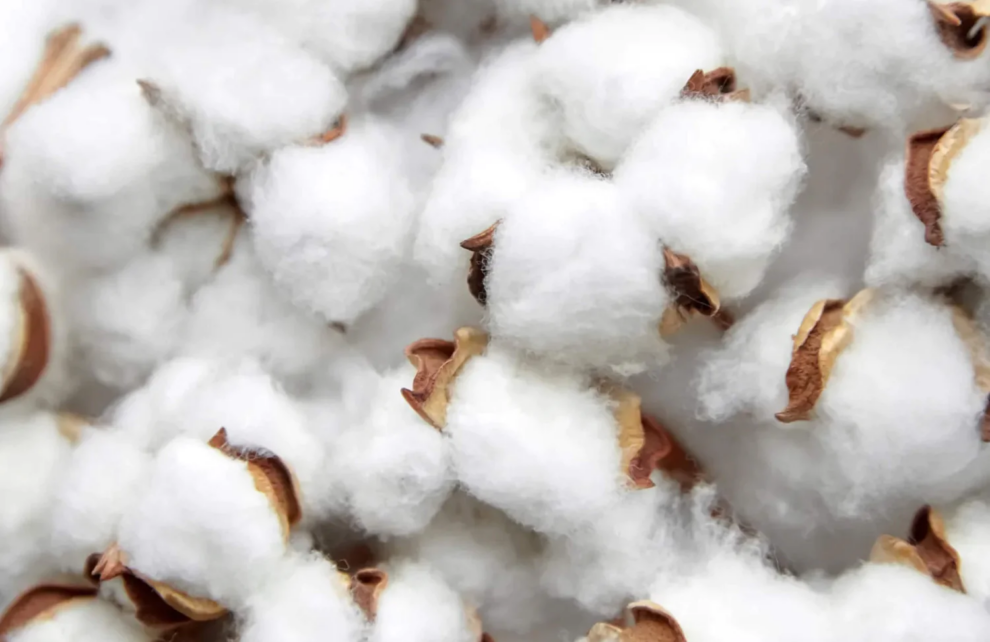Every year there seems to be a new product used in designs during the holiday. Some of them stay for a year or two and others stay around for decades. Sometimes it is the color scheme like the series of metals with silver, bronze and gold. Some years it has been dried fruit such as apples, oranges and pomegranates.
Over the last couple of years, there has been a trend to use burlap for ribbons, ornaments, bows and even tree skirts. Some of these are designs for a more country look whereas others give a greater sense of elegance.
I have seen a big influx in the use of cotton bolls whether in dried arrangements, wreathes or mixed with Christmas greens over the past few years. Sometimes people strip off the bolls of cotton and place them in jars with Christmas ornaments to give it a little extra holiday flare. I think the use of cotton gives a fresh snow effect on whatever product it graces.
According to many historic records, cotton has been around for nearly 7000 years. The top-producing countries of cotton are China, India and the United States, with the United States being the largest exporter of the product. China and India use what they produce domestically as they contain the largest textile industries.
Cotton needs a long, warm growing season in order to thrive. The plants require an average rainfall from 25 to 50 inches of rain a season in fairly heavy soils. Native species are considered perennial in some areas and grow into shrubs in parts of Central America. The species grown in fields is seeded every spring and harvested every fall and then tilled into the soil after harvest for a new season. It takes approximately 8 weeks for a plant to bloom from the date it is planted.
The plant belongs to the mallow family and the flowers resemble a small hollyhock flower. The flower first opens in a creamy white color, changing to yellow, then pink and eventually burgundy before falling off three days later. The seed pod, or boll, develops seeds attached to cotton fibers which expand and fill the boll until it matures. At the time of maturity, the boll will crack and pop open to expose the puffy cotton that blooms out.
Natural cotton grows in white, yellow, pink, green and brown, but white is the preferred color in domesticated plants as they are universal for various products. The top-producing states are Alabama, Arkansas, Arizona, California, Georgia, Louisiana, Mississippi, Missouri, New Mexico, North Carolina, Oklahoma, South Carolina and Tennessee. States that produce lesser amounts are Texas, Kansas, Florida and Virginia.
I have grown cotton plants before in containers on the deck where they receive an abundance of sunshine and heat. This past year I tried a new variegated variety that did quite well. I can also monitor the amount of water much easier in containers. They have unique lobes leaves and beautiful flowers and when the cotton bolls pop open, there is a sense of satisfaction with growing one of these plants. You can even get an extended season to grow them as you can move the containers in and out during early spring and late fall when the evenings are too cool. How you use the cotton product at maturity is up to each individual, but they are becoming quite popular.
Cotton is a product more of us take for granted. It is used throughout the world for making various products. Items such as clothing, blankets, and paper are some of the main items made from this little puff of cotton. From the plant, it is separated from the boll, and the cotton seed itself is sent off to industries that turn it into yard and thread to go to the factories where they are used to create all these products. The seed itself has been used to make cottonseed oil which is used in the same way vegetable oils are used.
Cotton is also used in stuffing items such as coats, pillows and even bedding in some parts of the world as it is breathable, yet still retains warmth. During this season, we all think of things a little warmer to snuggle into and this recent warm spell will eventually go back to more seasonal temperatures.
During the Christmas season ahead, take a quick look around at all the products that surround you that are made out of cotton. You might just be surprised how many items are used on a daily basis. On a more personal side, find a nice cotton shirt as a gift or a warm blanket to snuggle in during these cool winter evenings.
Source: The Jamestown Sun










